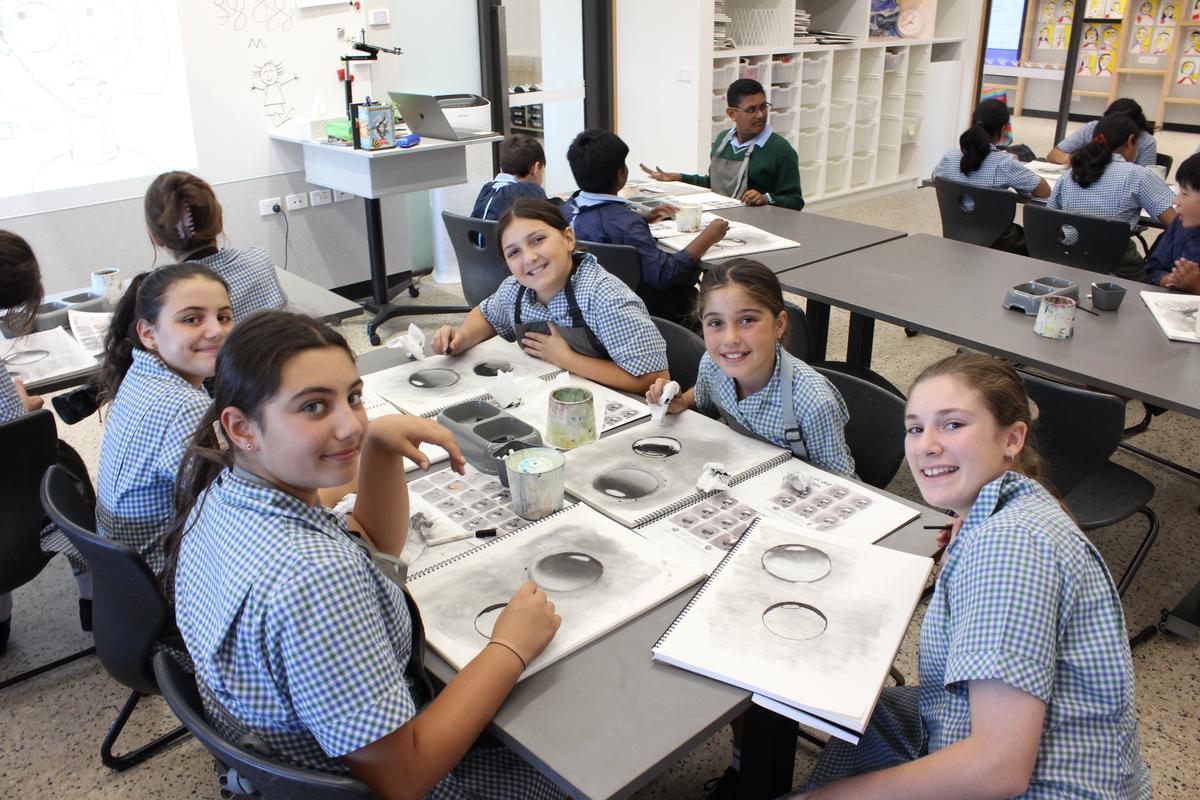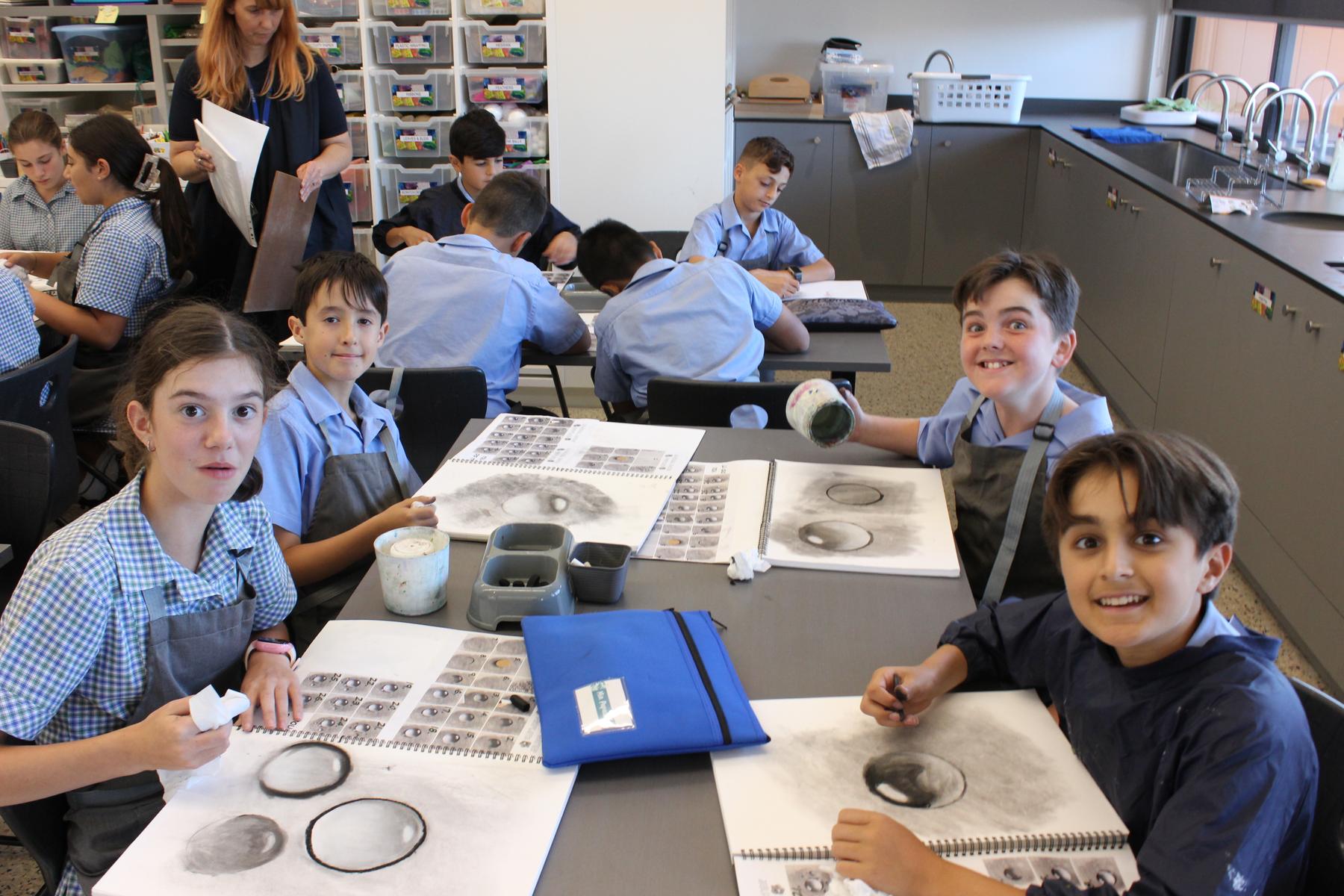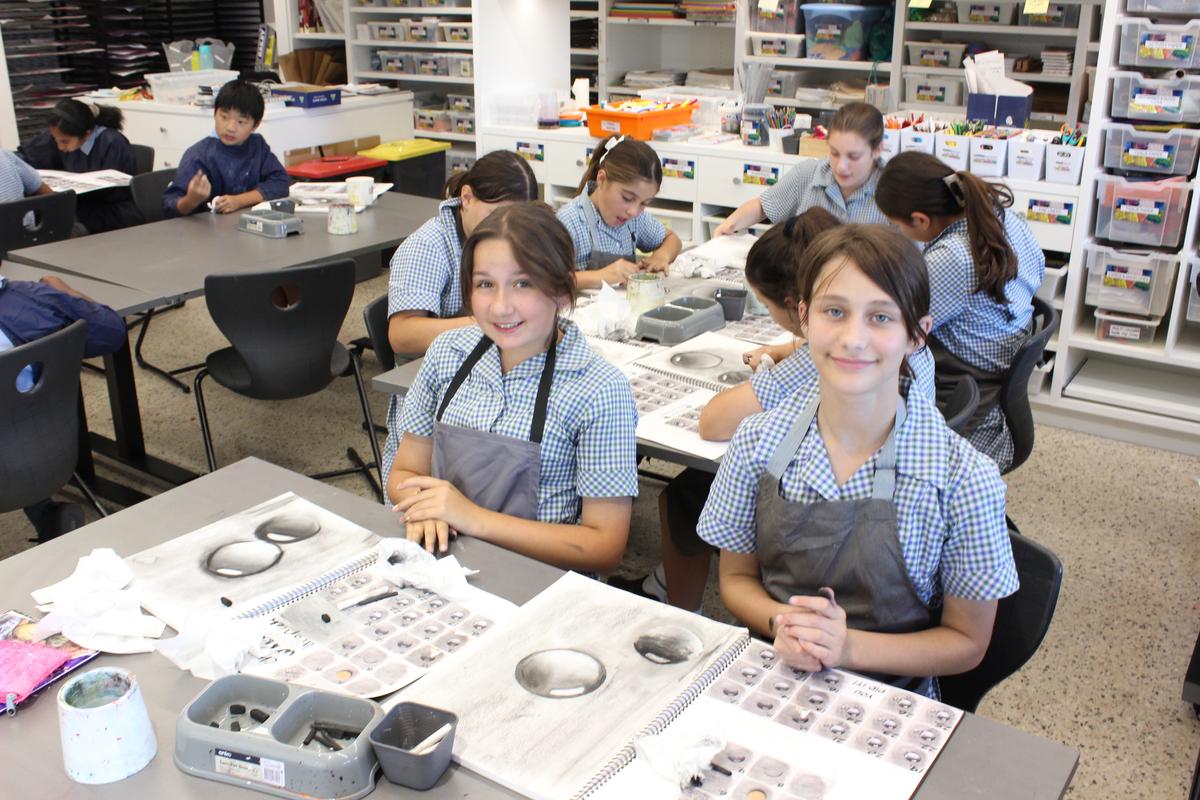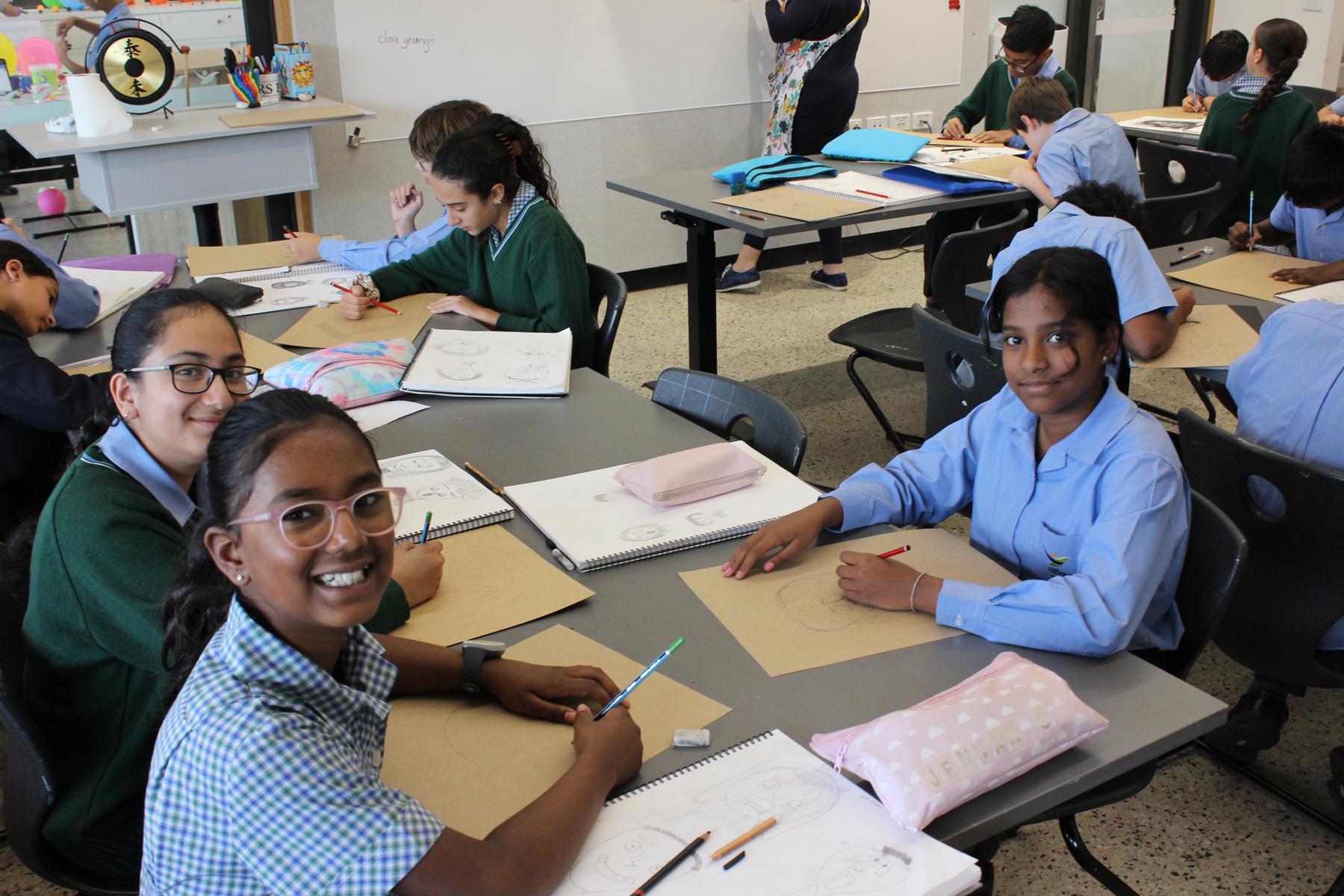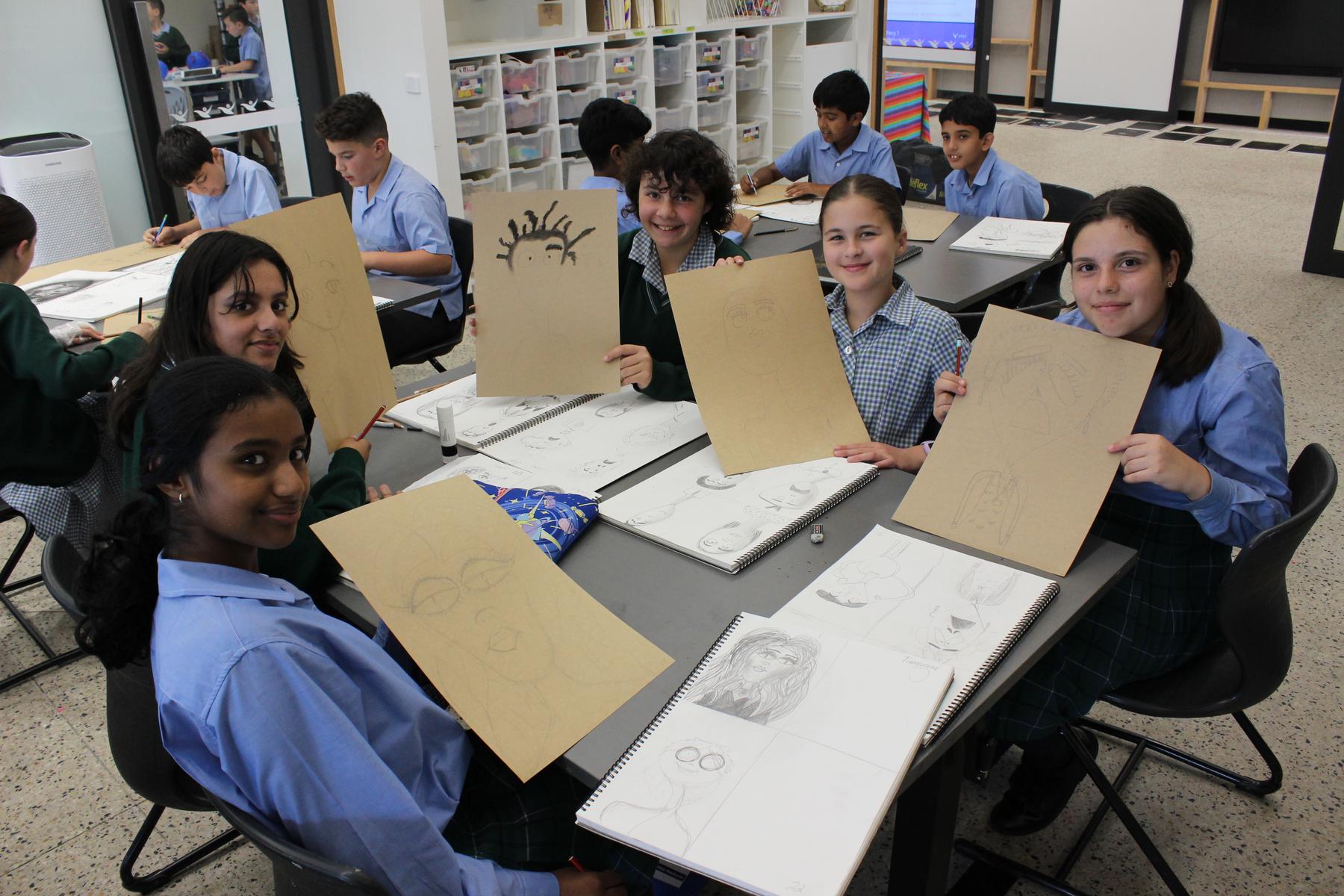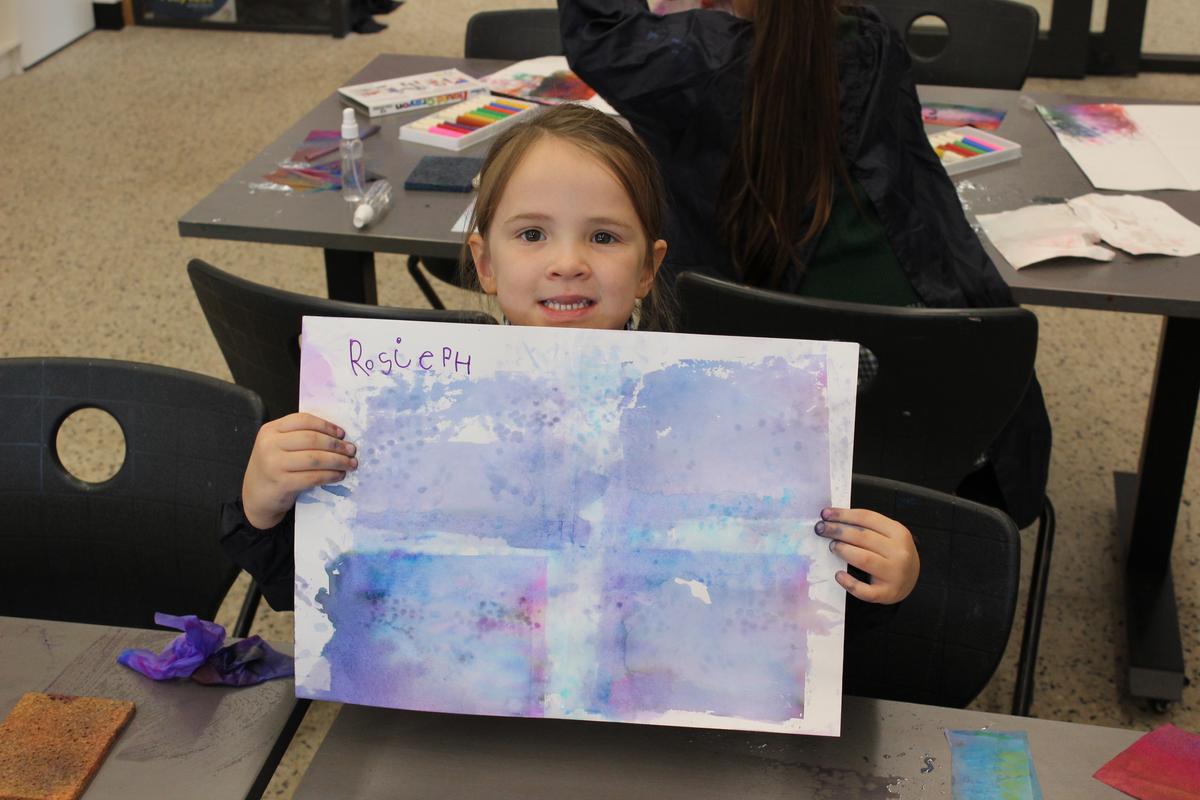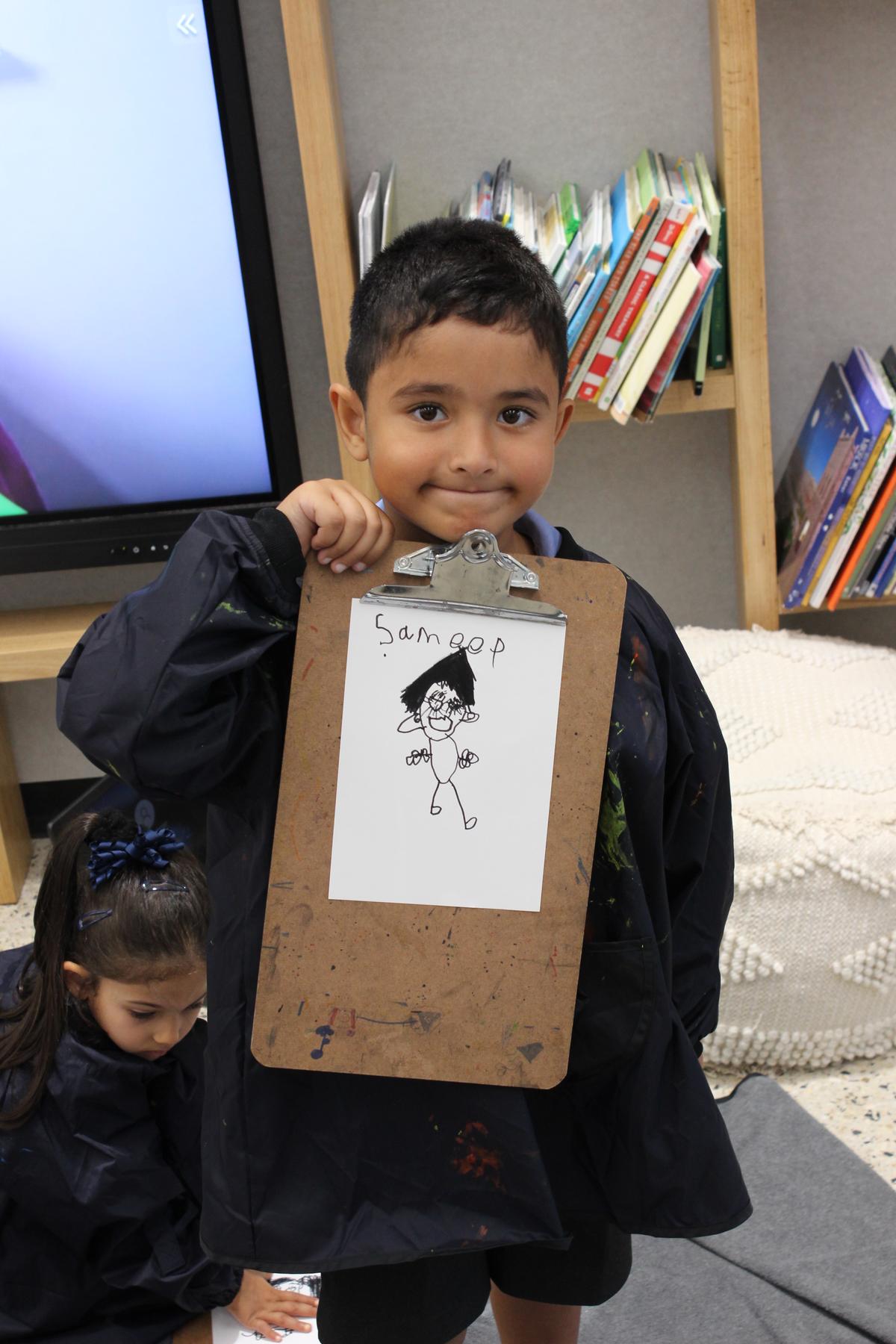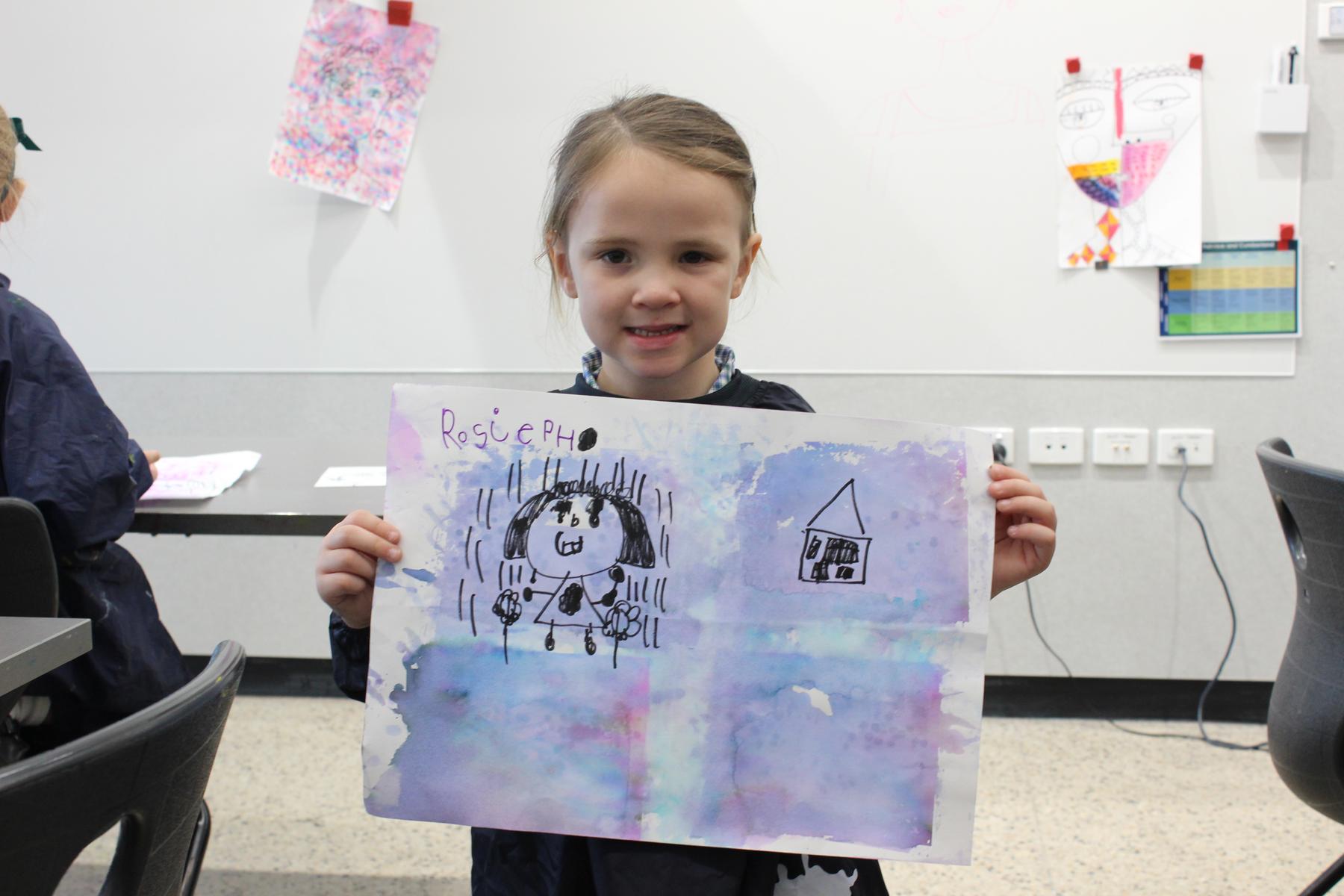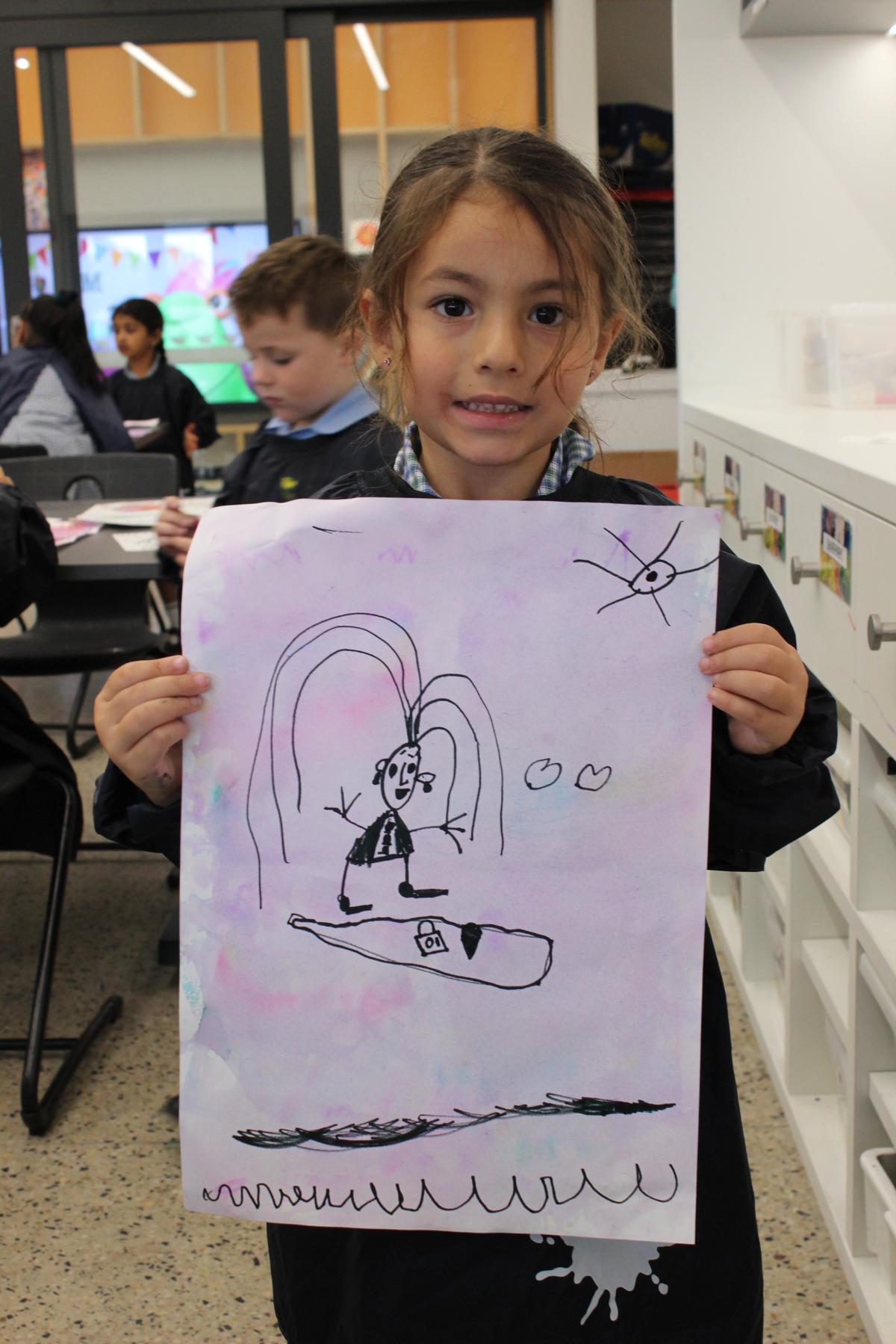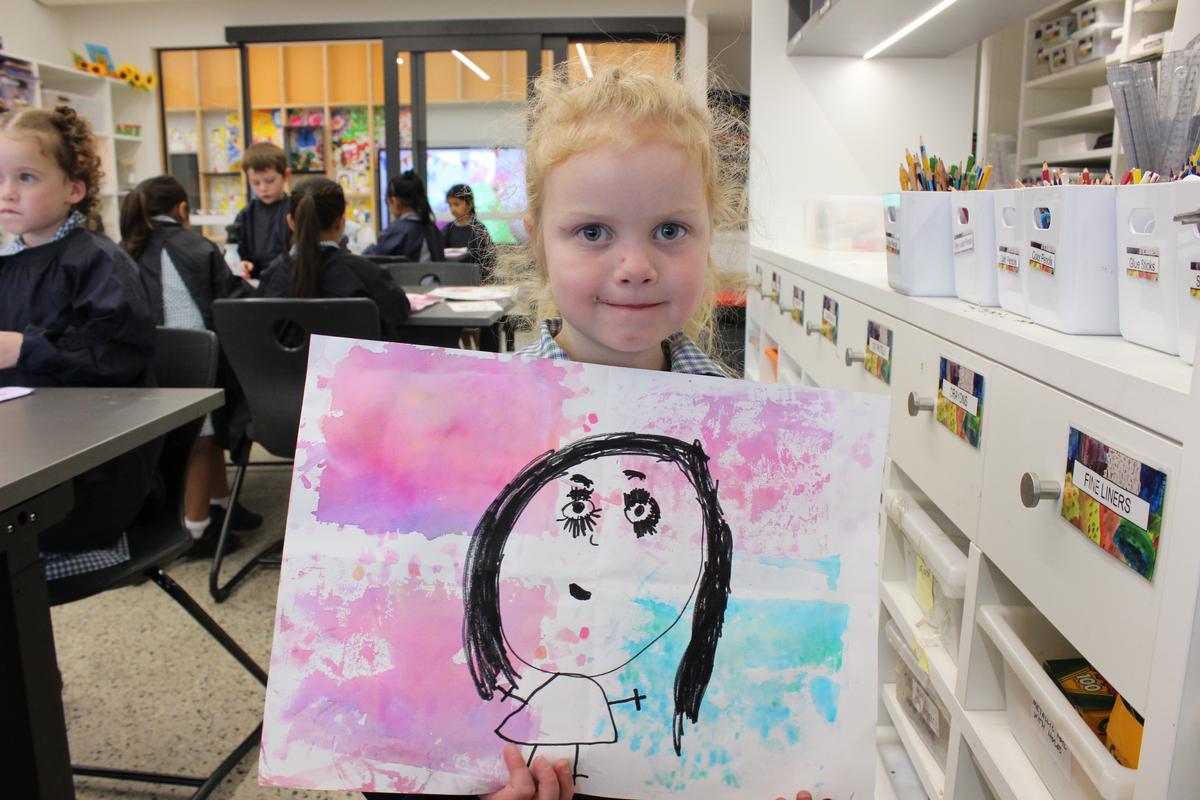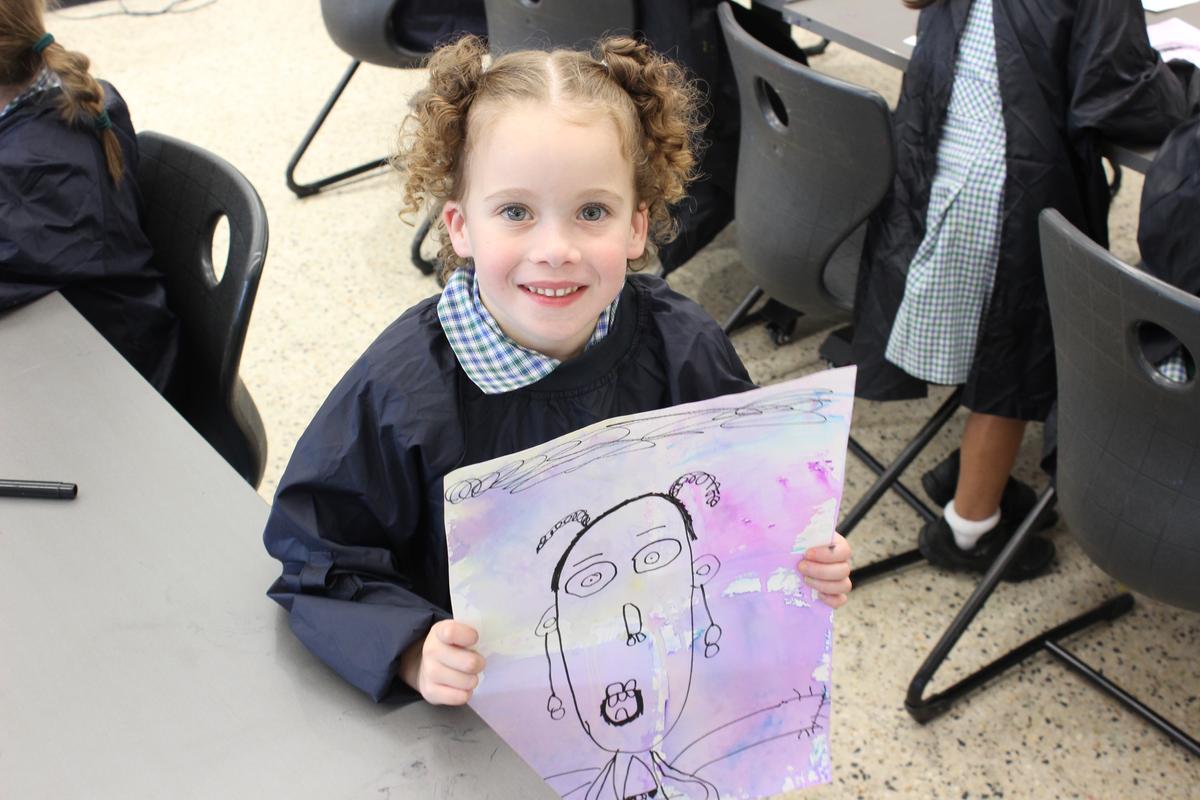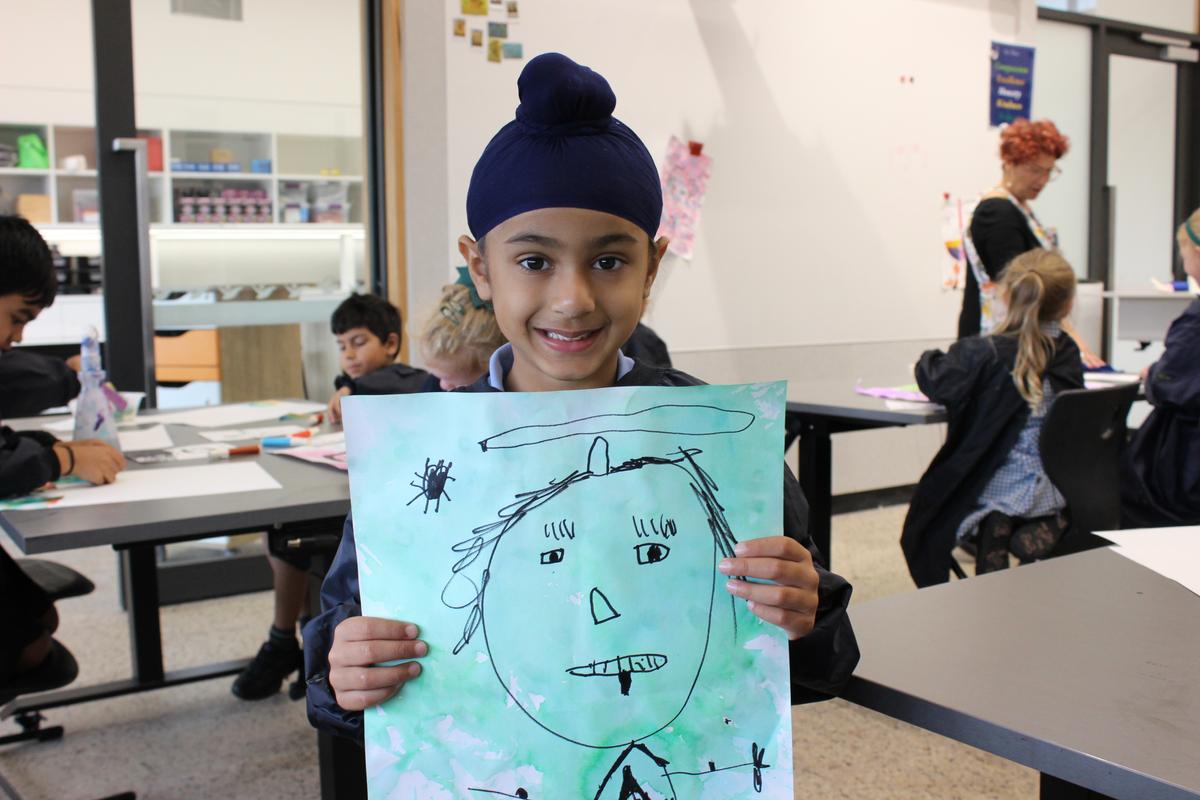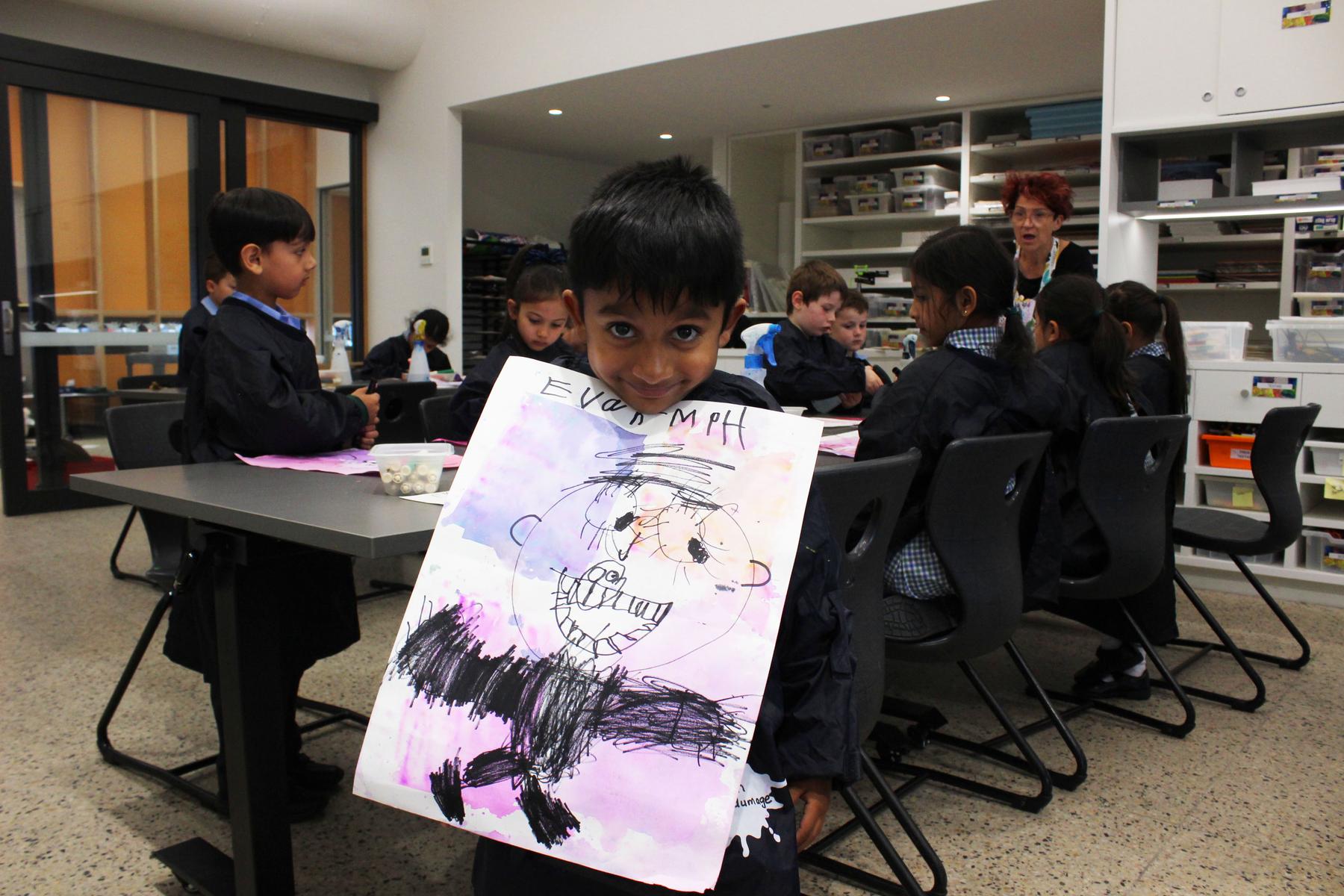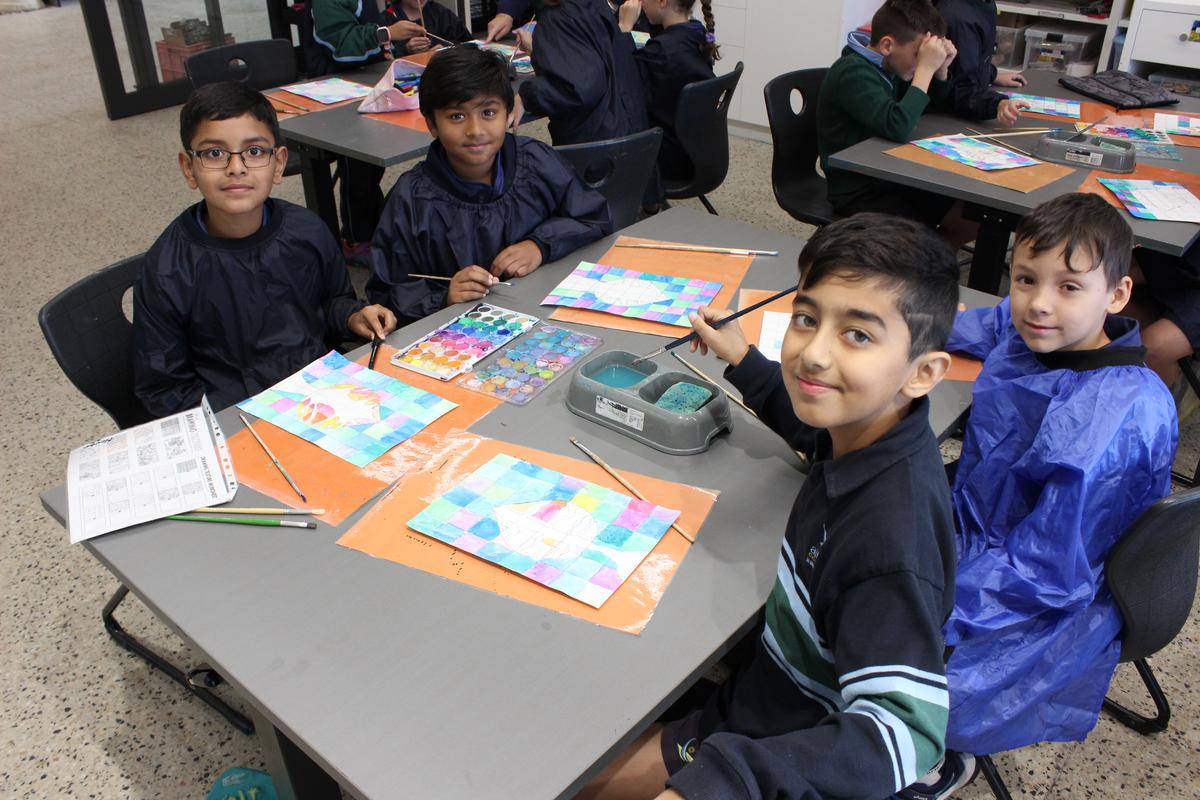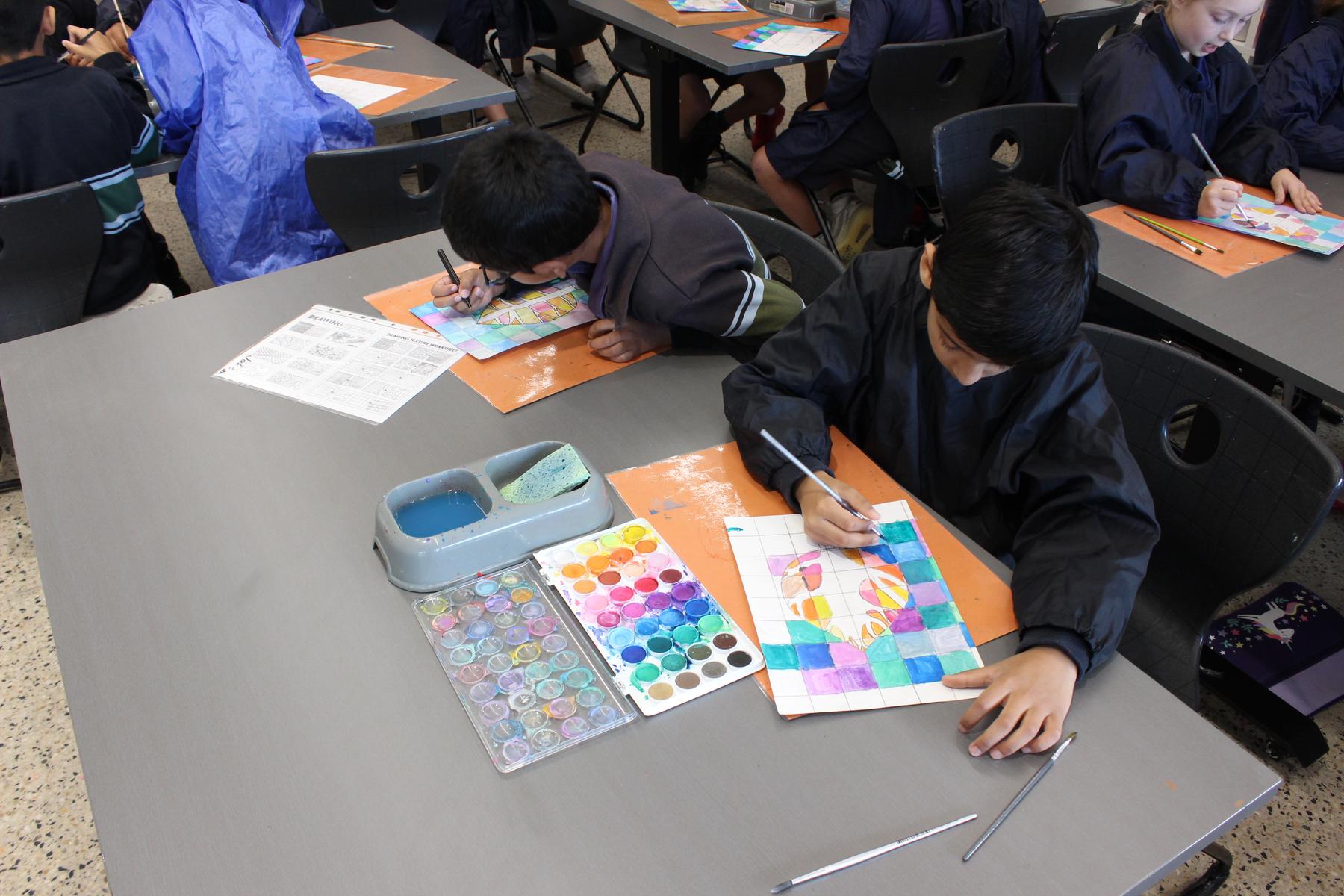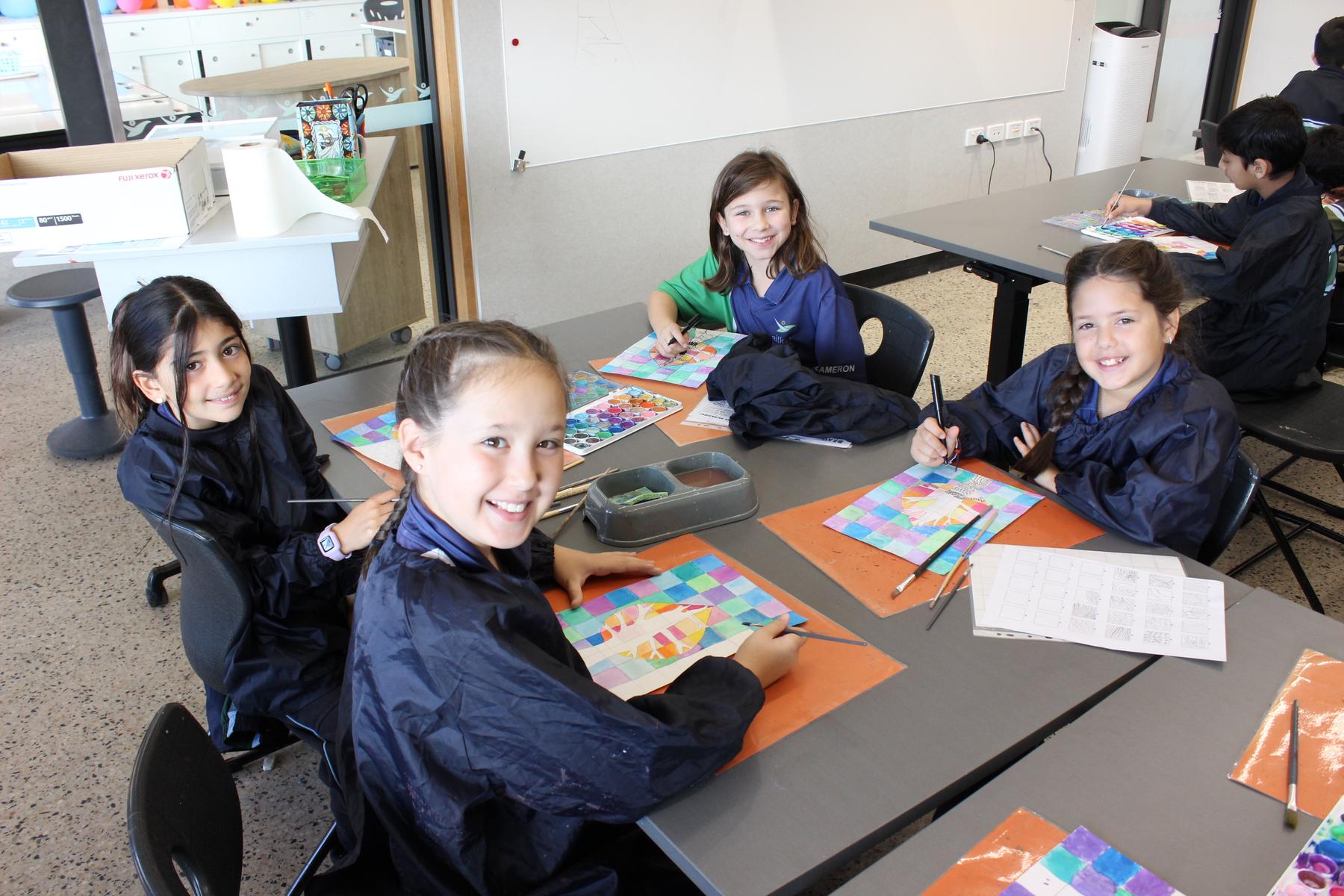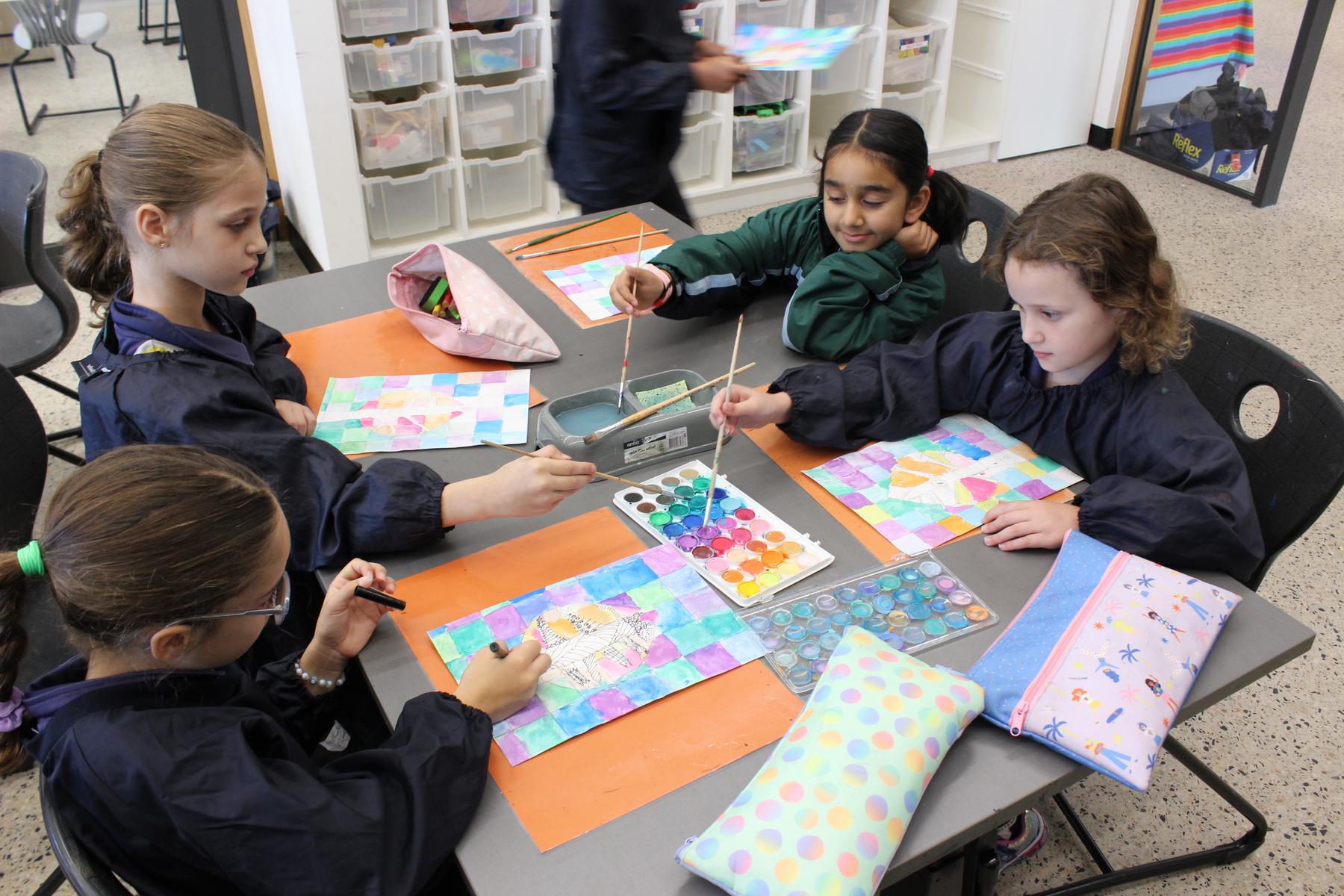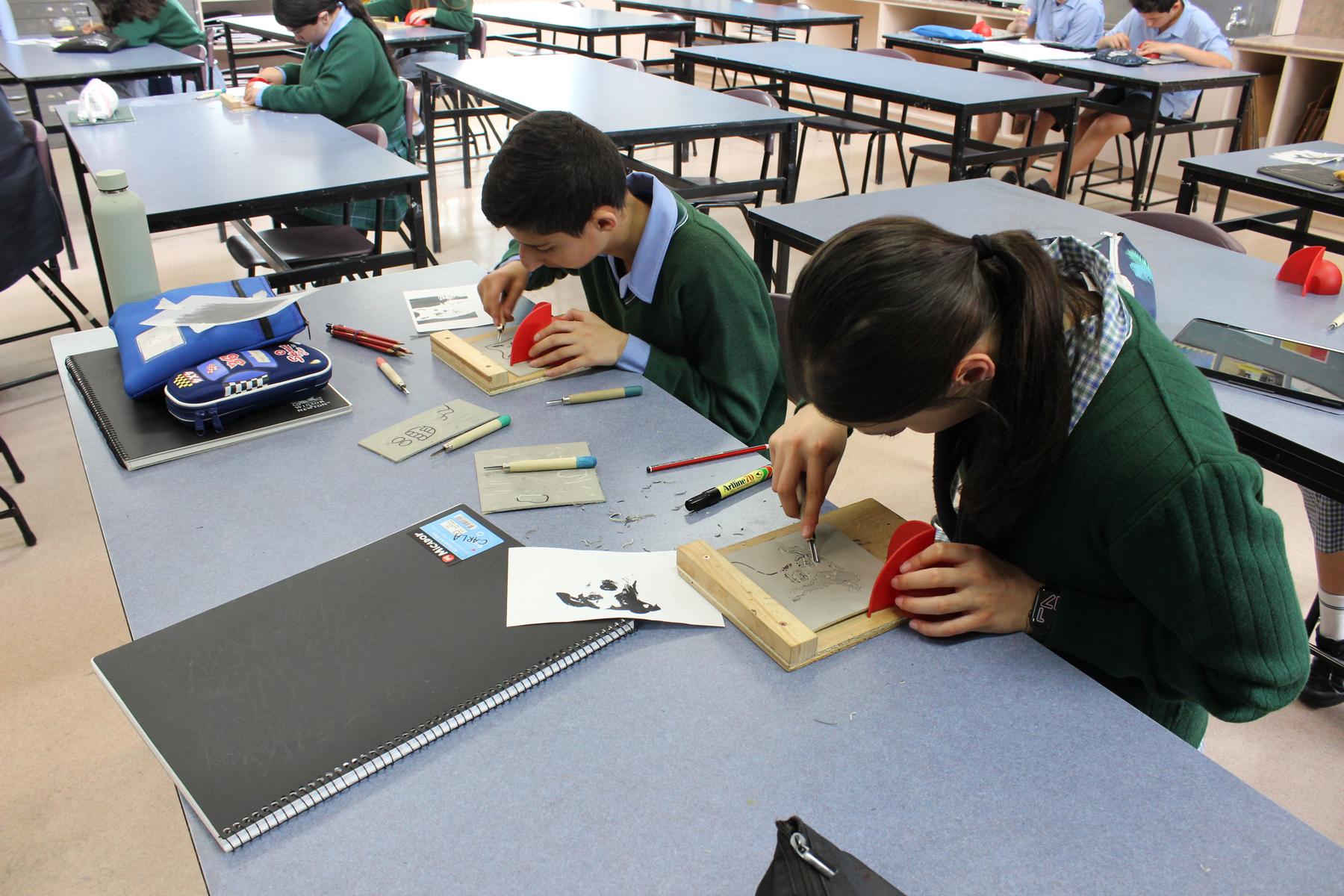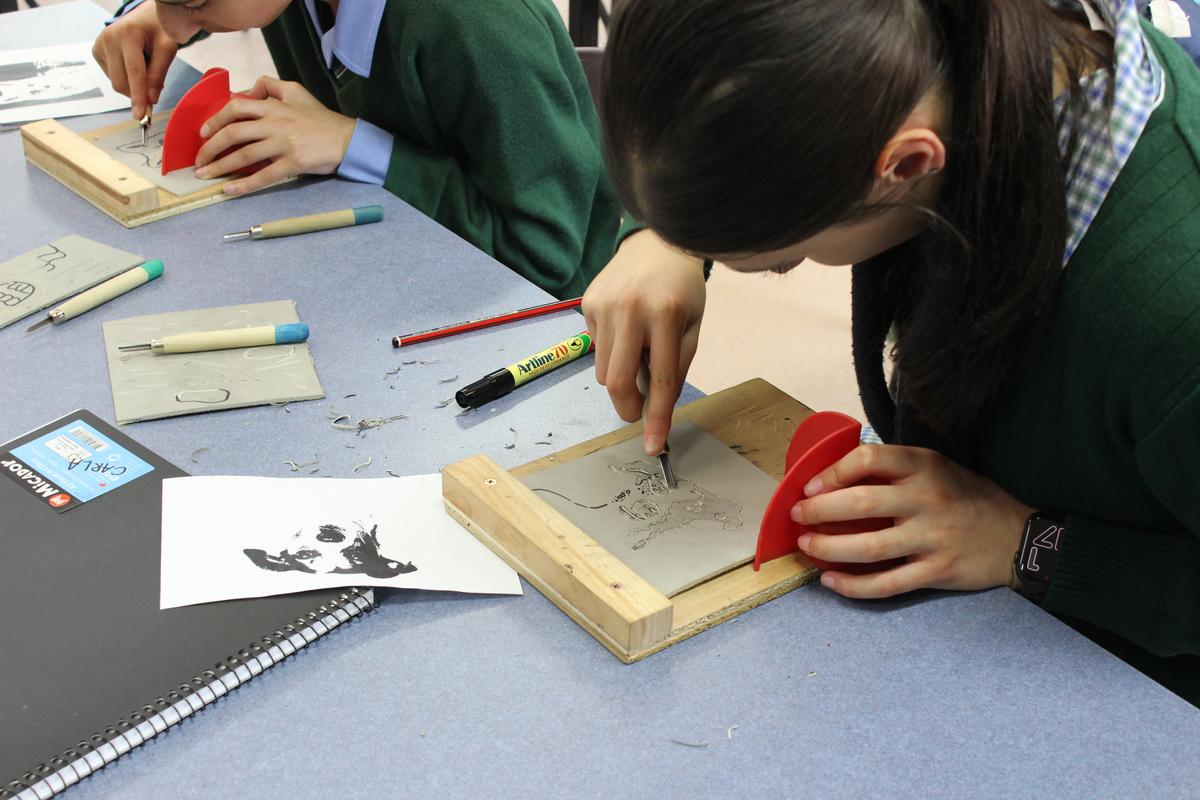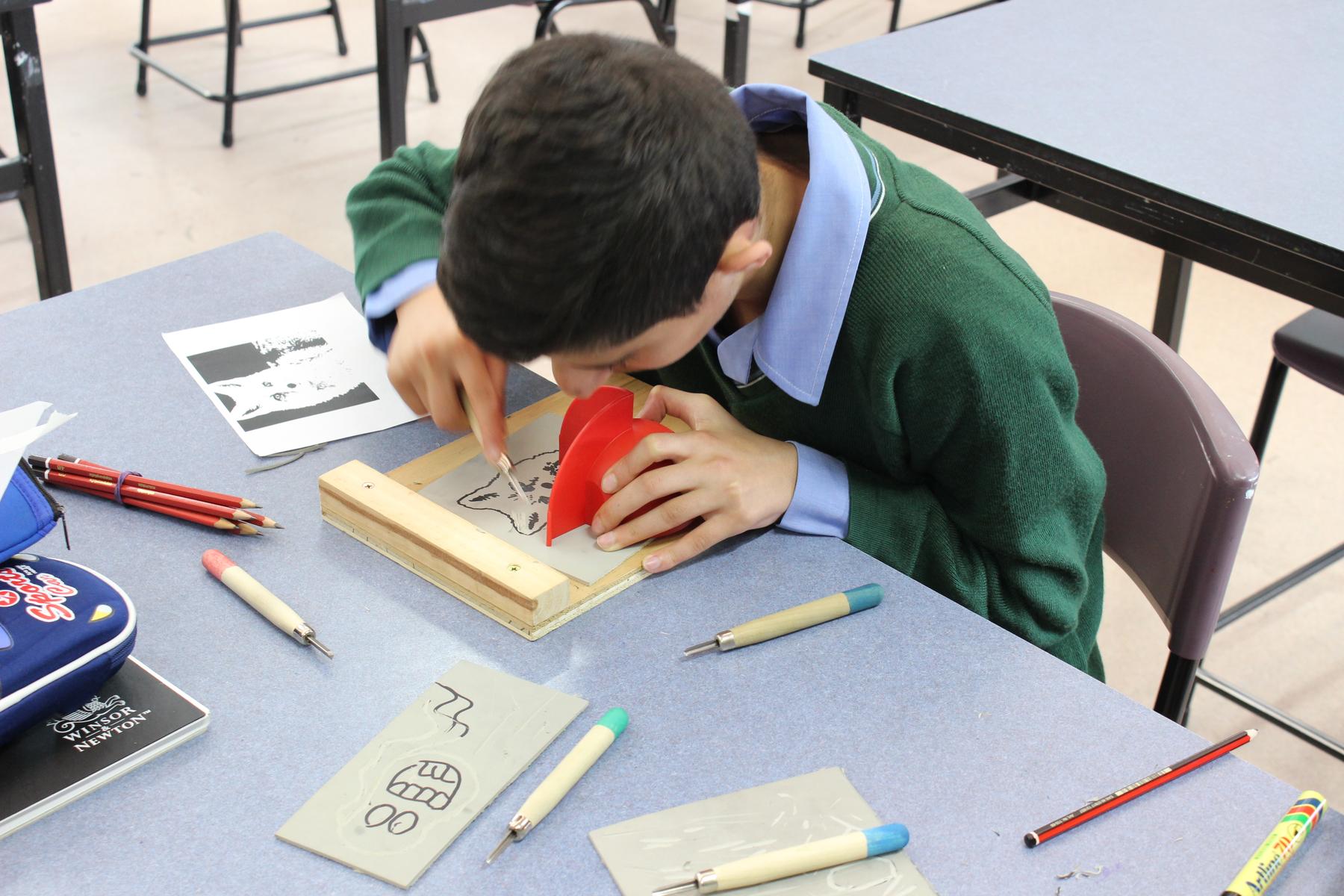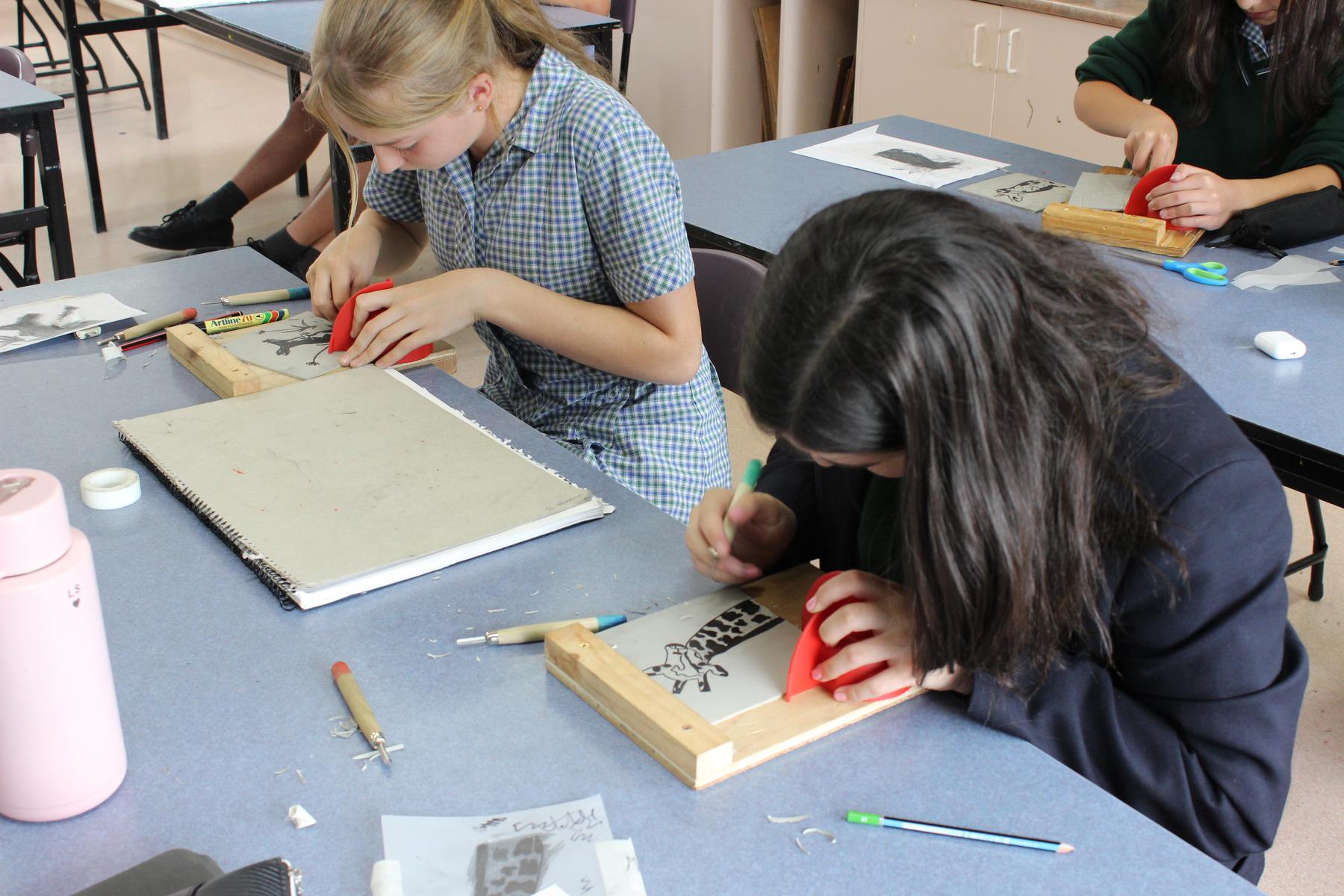Visual Arts
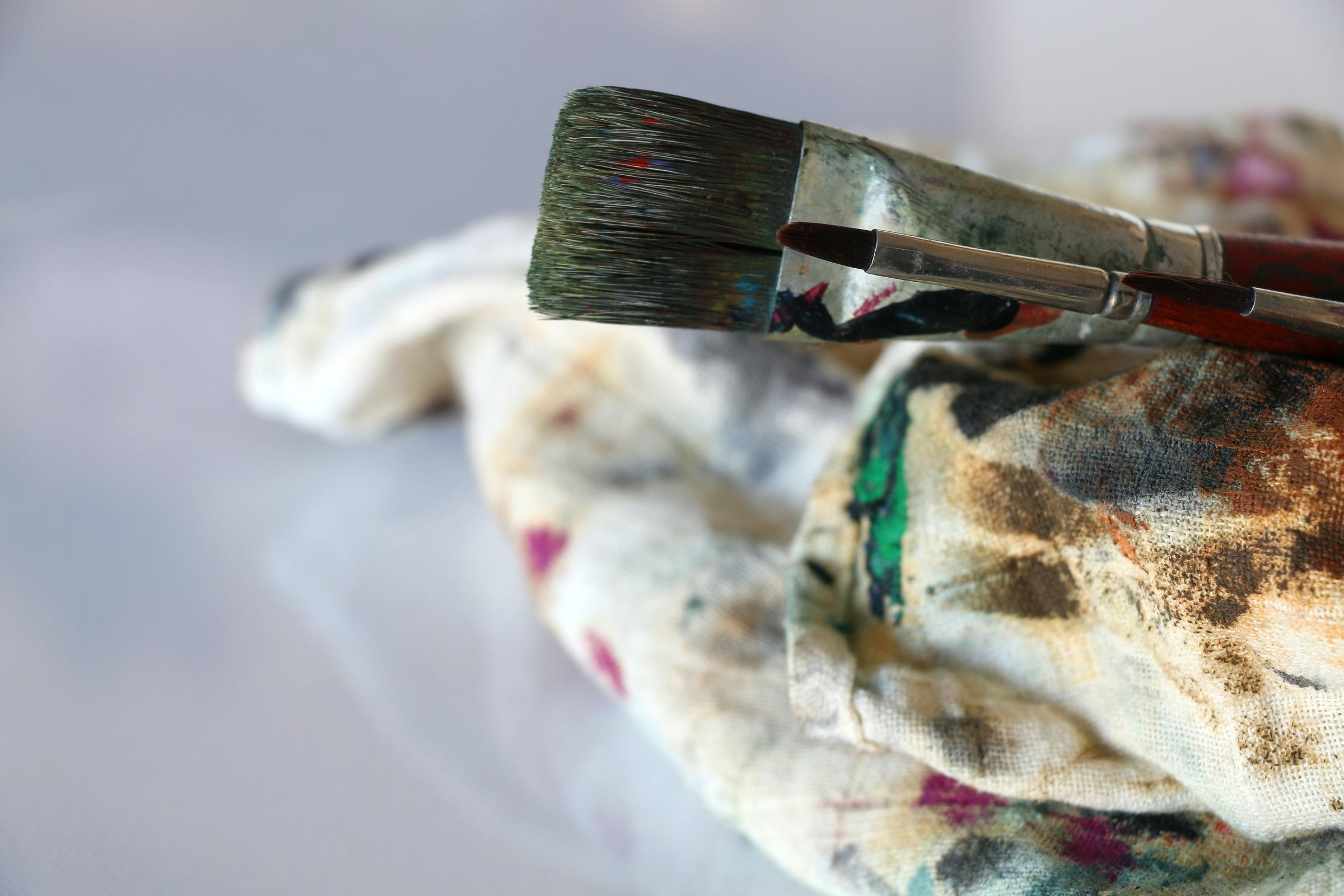
I hope all in the Aitken Community had a chance to rest over the break. The start of Term Two has been a busy one, with students engaging in a range of mediums across the faculty. Some year levels finished off tasks at the end of Term One, starting afresh, while others will complete the finishing touches on their masterpieces shortly.
Year Six, for example, had been learning about style, exaggeration, proportion, and character features studying the portrait work of Tim Burton. They were taught how to create light, shadow and form using black, white, and grey scales. A unit often involves multiple processes, lots of pre-teaching skills prior to the production of a final work. You will see in these images, students learning how to turn a circle into a sphere, applying charcoal and pastel, sketching portraits, and trialing the style in preparation for the final portrait produced on a cardboard support. Many of these weird and wacky characters will likely be exhibited later in the year, so keep an eye out.
The Preps are enjoying very tactile experiences in the Art rooms. These textural washes are an example. Students created individual artworks and contributed to a collaborative piece on display in the foyer. What strikes me most about Fairview students is they create unencumbered by fear and the results are always energetic and gorgeous. They just give everything a go and enjoy themselves while doing it.
Year Three are finishing up their warm and cool colour trees. This colour theory unit teaches students about the colour wheel, tone, value, complimentary and analogous theory while challenging design thinking with compositional placement. It is a longer task full of rich learning including the control of ink to water ratios and brush techniques, followed by controlled linear work with fine liner.
Year Eight electives afford students the opportunity to experience new mediums while developing their visual language. Lino printing, a traditional technique also produced using woodblock, is one artform investigated. It requires an understanding of positive, negative design, transfer, carving, a lengthy technical printing process and focus at each stage.
Mrs Linda Camilleri
Head of Faculty – Visual Arts

